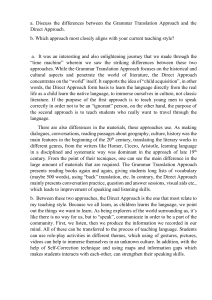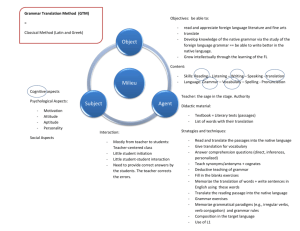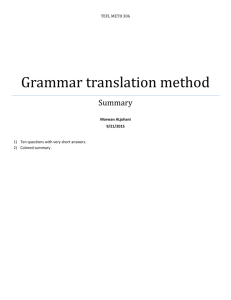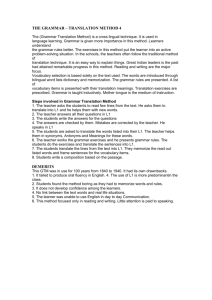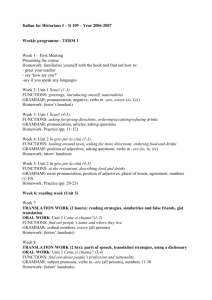TPR Storytelling: 3-Step Guide to Language Teaching
advertisement
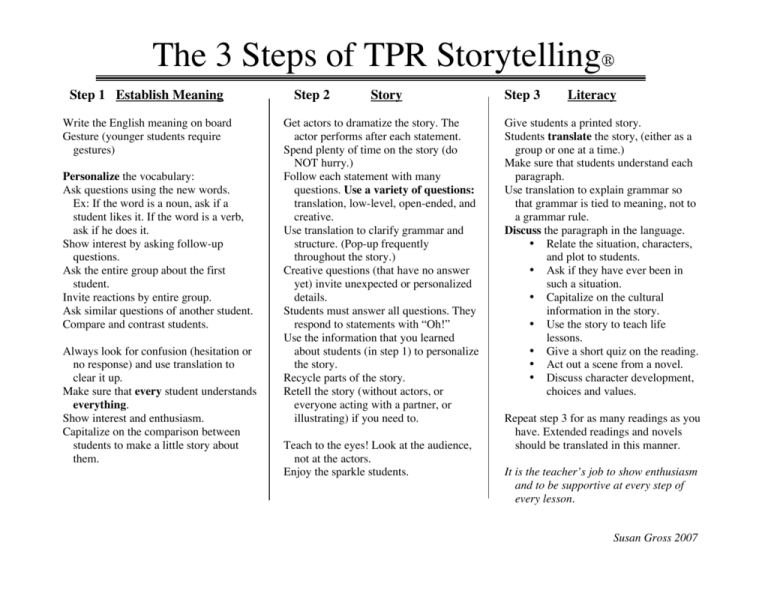
The 3 Steps of TPR Storytelling® Step 1 Establish Meaning Write the English meaning on board Gesture (younger students require gestures) Personalize the vocabulary: Ask questions using the new words. Ex: If the word is a noun, ask if a student likes it. If the word is a verb, ask if he does it. Show interest by asking follow-up questions. Ask the entire group about the first student. Invite reactions by entire group. Ask similar questions of another student. Compare and contrast students. Always look for confusion (hesitation or no response) and use translation to clear it up. Make sure that every student understands everything. Show interest and enthusiasm. Capitalize on the comparison between students to make a little story about them. Step 2 Story Get actors to dramatize the story. The actor performs after each statement. Spend plenty of time on the story (do NOT hurry.) Follow each statement with many questions. Use a variety of questions: translation, low-level, open-ended, and creative. Use translation to clarify grammar and structure. (Pop-up frequently throughout the story.) Creative questions (that have no answer yet) invite unexpected or personalized details. Students must answer all questions. They respond to statements with “Oh!” Use the information that you learned about students (in step 1) to personalize the story. Recycle parts of the story. Retell the story (without actors, or everyone acting with a partner, or illustrating) if you need to. Teach to the eyes! Look at the audience, not at the actors. Enjoy the sparkle students. Step 3 Literacy Give students a printed story. Students translate the story, (either as a group or one at a time.) Make sure that students understand each paragraph. Use translation to explain grammar so that grammar is tied to meaning, not to a grammar rule. Discuss the paragraph in the language. • Relate the situation, characters, and plot to students. • Ask if they have ever been in such a situation. • Capitalize on the cultural information in the story. • Use the story to teach life lessons. • Give a short quiz on the reading. • Act out a scene from a novel. • Discuss character development, choices and values. Repeat step 3 for as many readings as you have. Extended readings and novels should be translated in this manner. It is the teacher’s job to show enthusiasm and to be supportive at every step of every lesson. Susan Gross 2007
